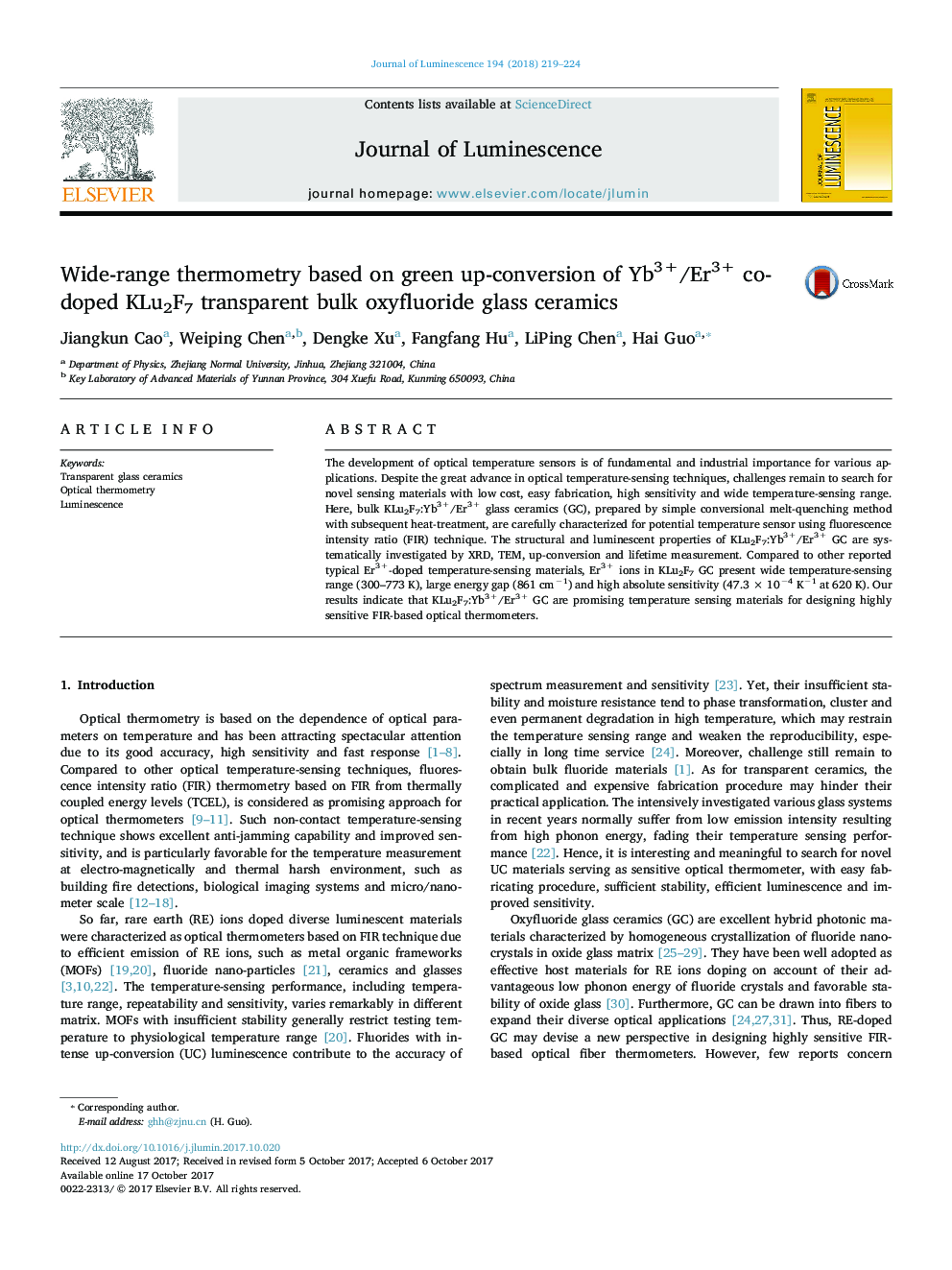| Article ID | Journal | Published Year | Pages | File Type |
|---|---|---|---|---|
| 7840562 | Journal of Luminescence | 2018 | 6 Pages |
Abstract
The development of optical temperature sensors is of fundamental and industrial importance for various applications. Despite the great advance in optical temperature-sensing techniques, challenges remain to search for novel sensing materials with low cost, easy fabrication, high sensitivity and wide temperature-sensing range. Here, bulk KLu2F7:Yb3+/Er3+ glass ceramics (GC), prepared by simple conversional melt-quenching method with subsequent heat-treatment, are carefully characterized for potential temperature sensor using fluorescence intensity ratio (FIR) technique. The structural and luminescent properties of KLu2F7:Yb3+/Er3+ GC are systematically investigated by XRD, TEM, up-conversion and lifetime measurement. Compared to other reported typical Er3+-doped temperature-sensing materials, Er3+ ions in KLu2F7 GC present wide temperature-sensing range (300-773Â K), large energy gap (861Â cmâ1) and high absolute sensitivity (47.3 Ã 10â4Â Kâ1 at 620Â K). Our results indicate that KLu2F7:Yb3+/Er3+ GC are promising temperature sensing materials for designing highly sensitive FIR-based optical thermometers.
Related Topics
Physical Sciences and Engineering
Chemistry
Physical and Theoretical Chemistry
Authors
Jiangkun Cao, Weiping Chen, Dengke Xu, Fangfang Hu, LiPing Chen, Hai Guo,
